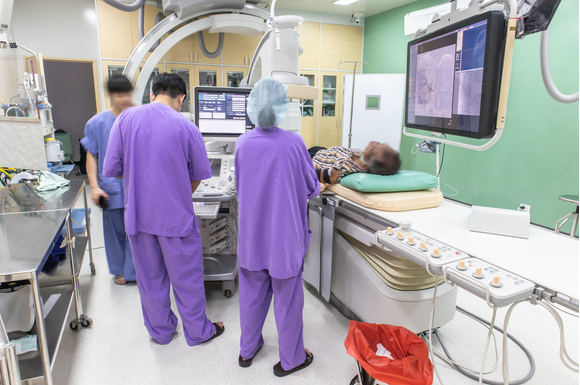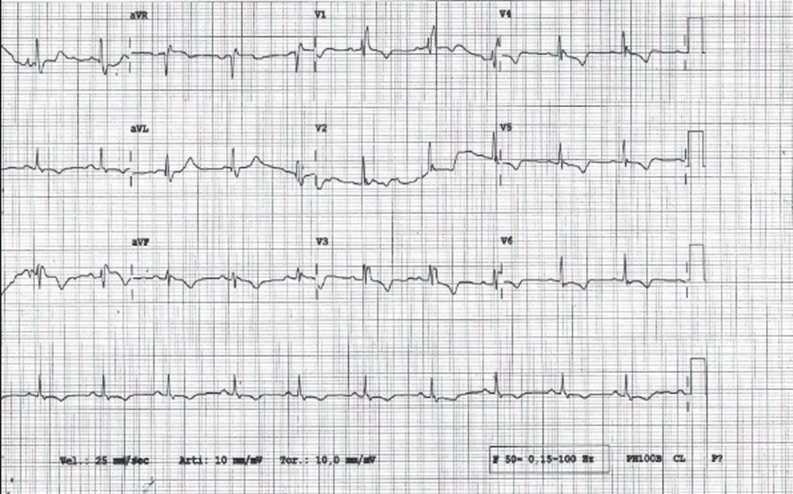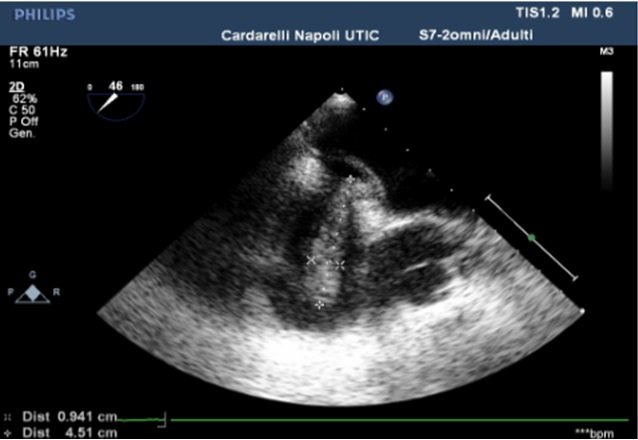- Mauro Giordano
- Brief Report and Case Report
An interesting case of entrapped thrombus in a patent with Foramen Ovale
- 2/2019-giugno
- ISSN 2532-1285
- https://doi.org/10.23832/ITJEM.2019.015
Anna De Vita1, Tiziana Ciarambino1, Rossella Gottilla2, Mauro Giordano3
1) Department of Advanced Medical and Surgical Sciences, University of Campania “L. Vanvitelli”, Italy
2) Department of Cardiology and Intensive Unit Coronary, A. O. Cardarelli, Naples, Italy
3) MD, PhD
, Associate Professor of Internal Medicine
Chief of Postgraduate School of Emergency Medicine
Department of Advanced Medical and Surgical Sciences, University of Campania “L. Vanvitelli”, Naples, Italy

Background
The present case report shows a rare case of thrombus located through the patent foramen ovale (PFO), in a patent with pulmonary and paradoxical embolism. There is not consensus on an ideal treatment. Medical interventions or surgery can be applied for thrombi trapped through PFO. Thrombolysis is more frequently chosen in patients with severe pulmonary embolism and an unstable status, which cannot wait for surgery. In conclusion coexistence of pulmonary embolism and systemic arterial embolism suggests the diagnosis of paradoxical embolism which suggesting the presence of intracardiac defects such as PFO. In the reported case, the thrombus was migrated from right popliteal artery to the right atrium and then to the left atrium, through the patent foramen ovale.
Case Report
Figure 1
Chest X-ray and abdominal CT scan showed no paradoxical embolism. Superior left limb arterial echo-Doppler showed brachial occlusion. Transthoracic echocardiography and transesophageal echocardiography (TEE) (Figure 2) revealed a mobile thrombus (cross-sectional area 0,94 x 4,5cm) extending from the right atrium to the left atrium through PFO, normal right cardiac cavities and arterial pulmonary hypertension.
The left atrial thrombus was mobile and, during diastole, protruded from the mitral valve in the left ventricle. Chest spiral computed tomography revealed bilateral pulmonary embolism. Doppler ultrasonography of the lower limbs revealed acute right popliteal deep-vein-thrombosis. Anticoagulant treatment was started and the patient reached respiratory and hemodynamic stability, cardiothoracic intervention was planned with the patient under cardiopulmonary bypass. The right atrium was incised and the thrombus in the right atrium was found entrapped within the PFO. The thrombus was removed from the right chambers, the PFO and the left atrium and PFO closed by direct patch.
The pulmonary arteries were incised and the pulmonary artery thrombi were removed via surgical embolectomy. The patient had an uncomplicated postoperative course and was admitted to the Internal Medicine Department, to perform post-surgical rehabilitation and to investigate the causes of thrombosis. Lab tests were performed and founding the presence of wild type FV Leiden G1691A, wild type FII G20210A and heterozygosis for methylenetetrahydrofolate reductase (MTHFR) A1298C. This coagulation pattern is not correlated with thrombophilia, but with an augmentation of fasting plasma homocysteine levels which can be related with an increased risk of thrombosis.
Discussion
The present case report shows a rare case of thrombus located through the PFO, in a patent with pulmonary and paradoxical embolism. There is not consensus on an ideal treatment1. Medical interventions or surgery can be applied for thrombi trapped through PFO. Thrombolysis is more frequently chosen in patients with severe pulmonary embolism and an unstable status, which cannot wait for surgery. It was related with higher 60- day mortality as compared with surgery in patients who do not suffer from initial shock or cardiac arrest. Thrombectomy under extracorporeal circulation is the most frequently chosen treatment in the published literature and appears justified in the prevention of paradoxical embolism2,3. Surgery is associated with a lower overall incidence of post-treatment embolic events and a lower 60-day mortality4,5.
Conclusions
References
- Wilmshurst P.T., de Belder M.A. Patent foramen ovale in adult life. Br Heart J. 1994; 71:209–212.
- Zhang HL, Liu ZH et al. Paradoxical embolism: Experiencesfrom a single center. Chronic Dis Transl Med. 2017 Mar 30; 3(2):123-128. e Collection 2017 Jun 25.
- Fauveau E, Cohen A, Bonnet Net al. Surgical or medical treatment for thrombus straddling the patent foramen ovale: impending paradoxical embolism? Report of four clinical cases and literature review. Arch Cardiovasc Dis. 2008 Oct; 101(10):637-44.
- Seo WW, et al. Systematic Review of treatment for Trapped Thrombus in Patent Foramen Ovale. Korean Circ J. 2017 Sep; 47(5):776-785. Epub 2017 Sep 11.
- Erkut B, Sevimli Set al. Entrapped thrombus in a patent foramen ovale: complicated by pulmonary embolism without paradoxical embolism. Tex Heart Inst J.2008;



